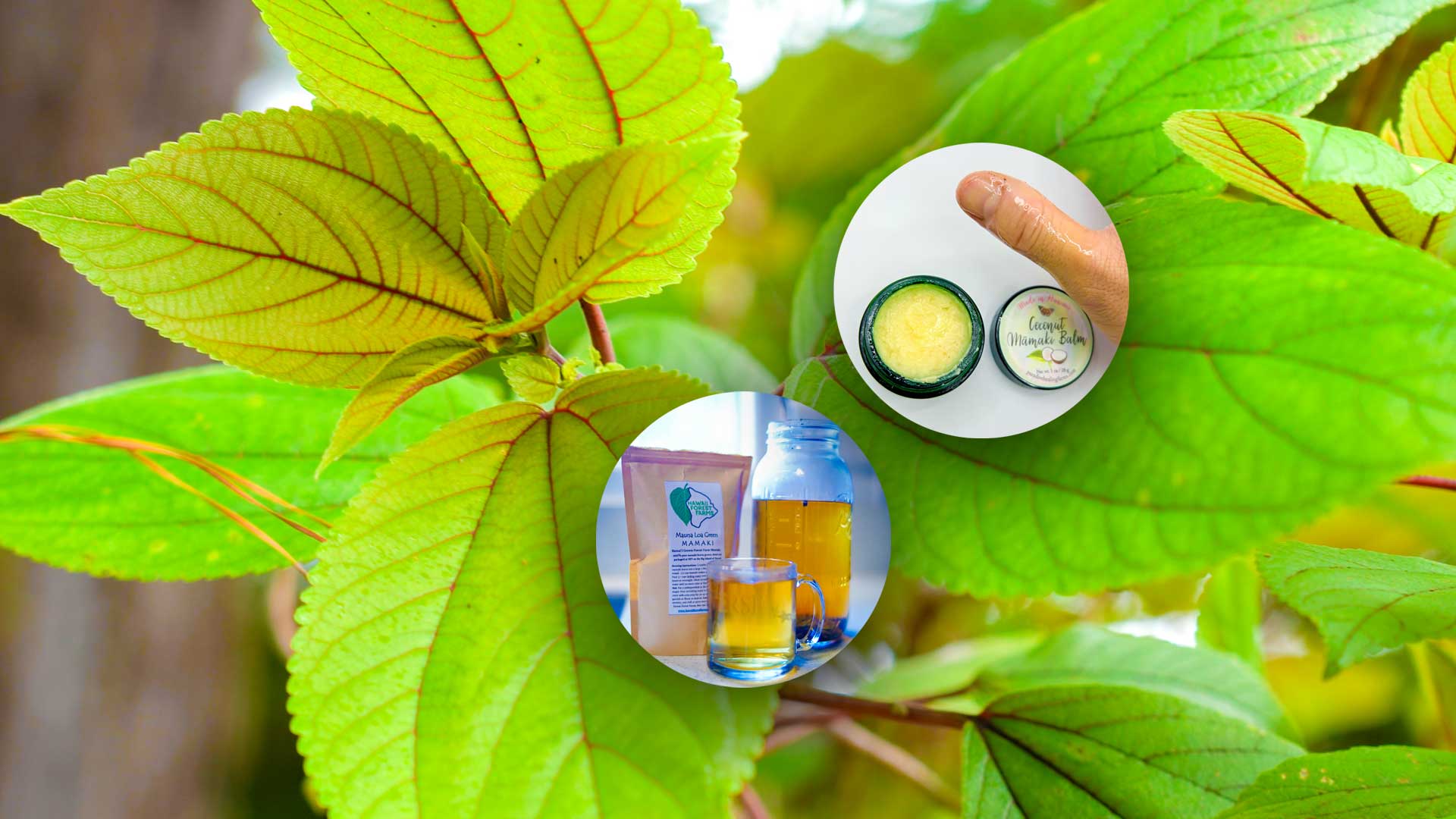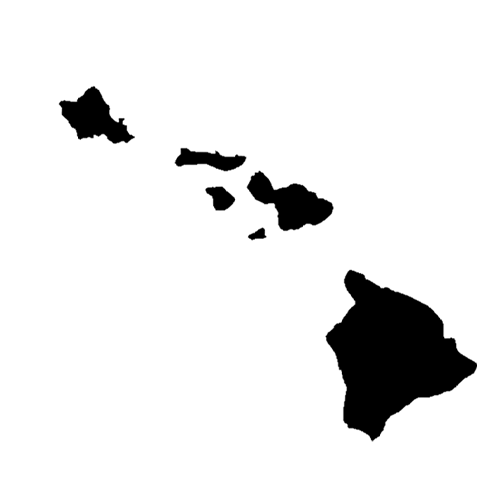TD;LR: I use māmaki to make a delicious, soothing tea, and in a balm to heal my wounded thumb.
Māmaki - it only grows in Hawaiʻi, but you hear about it everywhere. And this is for a good reason. Māmaki , or Pipturus albidus, is a small tree from the nettle family, which was used extensively by the Native Hawaiians. In olden times, its fibers were used in kapa cloth and rope, but today, its primary used to make herbal tea.

The plant itself is a very handsome shrub. The most recognizable version has stark red veins reminiscent of human arteries. Unlike some of its mainland counterparts, it has no stinging needles and they grow well in shade. I personally planted some in my māla garden, though they unfortunately succumbed to pests, or perhaps my own brown thumb. Though, while they were flourishing, I frequently availed myself of its leaves to make delicious tea.
Māmaki is Tea-riffic ☕
Māmaki tea has a light, grassy taste - much more pleasant than one would expect. It definitely does not taste like black tea or any other herbal remedy I’ve had, but it is certainly binge drinkable. And because it has no caffeine, you will not get the jitters (though the diuretic effect is definitely still very applicable). You can mix it up by adding other garden spices like the vaunted ʻolena, but by itself, māmaki makes for a tea-riffic base.
With the untimely passing of my māmaki trees, I set out to find another reliable source of leaves. There are some fantastic options for bottled drinks - such as Hilo’s very own Shaka Tea, though I found myself longing for the tea brewing process, which itself is oddly meditative. Thankfully, I was able to find Mauna Loa Green Māmaki Tea from Hawaii Forest Farms - a Volcano-based agroforestry farm that focuses on māmaki.
Now, this special strain is made from a version of māmaki with green veins instead of the red ones I was familiar with. The farm notes that this blend tastes similar to Camellia sinensis, the tea plant, so I was very curious to get a sip. The dried tea comes in a very convenient 2oz resealable pouch, with instructions on the front. 2oz doesn’t seem like a bunch, but a mere ¼ cup makes an entire 60oz jug of tea in no time. By my math - that's a lot of tea.
The brewing method is nearly exactly the same as with raw māmaki: bring water to a boil, and pour over the leaves. Let sit until it gets a little dark. Strain it, and enjoy hot or cold. In the case of Hawaii Forest Farm’s Mauna Loa Māmaki Tea, it starts light green, and settles somewhere around chartreuse. But the proof of the tea, is in the tasting.

First off, the smell is the exact same - a rich burst of earthy aroma. And the taste is nearly the same too! It immediately reminded me of the plant I had been missing in my life. I started to feel optimism and good vibes return. I could feel my health improving by the second. And it’s this health benefit that’s making headlines to this day (though it was the Native Hawaiians who figured this out all those years ago). In fact, one of the earliest written accounts of the plant was that it was used for “general debility” - which is a great catchall for not feeling well. This was the OG pick-me-up.
The reason for such good health effects is in the hidden compounds that we can’t see. Namely, antioxidants and phytochemicals in the form of catechins, chlorogenic acid, and rutin. Without going into an organic chemistry lesson, these substances are primarily found in teas, and there have been dozens of scientific articles that investigate the efficacy of each, with varying levels of benefits. These benefits include reduction of cancers, improved digestion, and stabilized blood pressure. However, I find it safer to just say, “it’s great for general debility”, and leave it at that.
This Balm's the Bomb 💣
After reading dozens of these articles - with my morning māmaki tea - I got to thinking about what else these phytochemicals could be used for. That’s where I was led to another locally produced product, an Anti-Aging Coconut Māmaki Skin Balm, by Paradise Healing Farms.
I wanted to do a little experiment to see if māmaki could be used to heal the outside as well, and this all-natural balm would be perfect to test. I have chronically damaged skin on my right thumb that never seems to heal. It flares up in the drier months, and has a persistent hangnail that inflames. So I got the balm, applied it to the finger, wrapped it in a glove, and kept it on overnight as I slept.

After a day, there was already a noticeable improvement to the skin, and the wounded part seemed to be healing, but by day 5 I was astonished to see the skin had nearly mended altogether. Especially the skin around the cuticle, which I had never paid attention to in my entire life. Of course, I could have reached for Vaseline® or bacitracin, but I wanted an all-natural Made-in-Hawaiʻi product, infused with māmaki. Score another one for the local businesses.

...
While I don’t understand the exact reason why māmaki is good for me, all I need to know is that it is good for me. The ancient Hawaiians were right as usual when it came to natural remedies, and this plant remains high in the pantheon of herbal panaceas. I’m always amazed when I’m able to tap into this knowledge from a bygone era, and thankful when it’s still accessible today. I encourage all readers to try and substitute the manmade with the natural, and try the biological instead of the pharmaceutical. It worked wonders for my ancestors, and I’d say it’s working the same for me.
Written by: Taylor Martin, Amateur Tea / Māmaki Enthusiast
The products in this post were not received in exchange for review, nor were we compensated for promotional consideration. We DO sell these products on our website, but firmly stand behind the editorial integrity of our reviews and opinion pieces.




